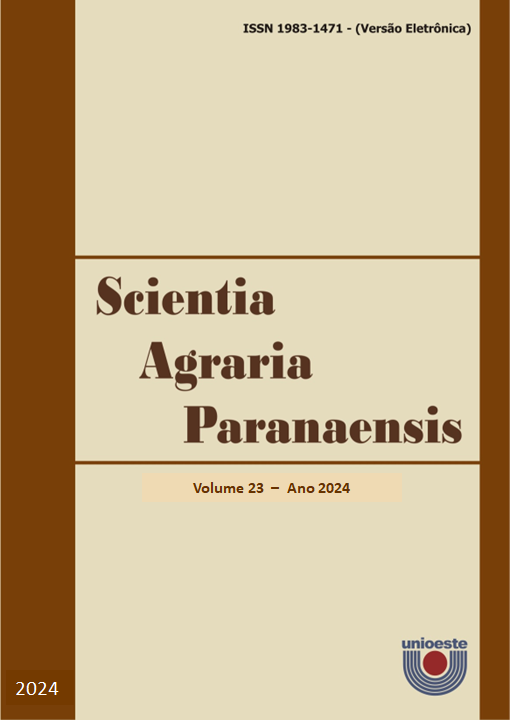Average passage time and viability of Fabaceae seeds recovered from sheep feces
DOI:
https://doi.org/10.18188/sap.v23.32501Resumo
Most of the forage plants in the Fabaceae family have a high percentage of hard seeds, so the endozoochoric dispersion of seeds can in theory accelerate their germination due to the natural scarification carried out during passage through the animals' digestive tract. However, damage caused by the chewing and digestion processes can kill the seeds, reducing the percentage of germination. The objective was to evaluate the passage time of seeds of butterfly pea, tropical kudzu and Campo Grande Stylosants through the digestive tract of sheep; as well as its viability after this process; and the potential of these animals as dispersing agents of these seeds in pastures. Seventy grams of seeds from each fabaceae were mixed with the concentrate and offered, in a single time, to nine castrated crossbred lambs with an average body weight of 40 kg. The animals were housed individually in metabolic cages, and their feces were collected at intervals of 6 h after ingesting the seeds (6, 12, 18, 24, 30, 36, 42, 48, 54, 60, 66 and 72 h). The recovered seeds are counted and evaluated for germination in the laboratory. The design used was completely randomized, in a factorial scheme: 3 fabaceous plants x 12 collection times, with three replications (animals). The recovery percentage of Clitoria ternatea, stylosants and kudzu seeds varied between 16 and 23%. Passage through the digestive tract positively affected the germination of kudzu seeds, which had the highest average (39%). Clitoria ternatea and stylosants seeds showed germination of 9% and 10%, respectively. The period of greatest seed recovery was 24 to 30 h for three species studied. Under these conditions, sheep can be considered legitimate agents that disperse these seeds in pastures.
Downloads
Publicado
Como Citar
Edição
Seção
Licença
Aviso de Direito Autoral Creative Commons
Política para Periódicos de Acesso Livre
Autores que publicam nesta revista concordam com os seguintes termos:
1. Autores mantém os direitos autorais e concedem à revista o direito de primeira publicação, com o trabalho simultaneamente licenciado sob a Licença Creative Commons Attribution que permite o compartilhamento do trabalho com reconhecimento da autoria e publicação inicial nesta revista.2. Autores têm autorização para assumir contratos adicionais separadamente, para distribuição não-exclusiva da versão do trabalho publicada nesta revista (ex.: publicar em repositório institucional ou como capítulo de livro), com reconhecimento de autoria e publicação inicial nesta revista.
3. Autores têm permissão e são estimulados a publicar e distribuir seu trabalho online (ex.: em repositórios institucionais ou na sua página pessoal) a qualquer ponto antes ou durante o processo editorial, já que isso pode gerar alterações produtivas, bem como aumentar o impacto e a citação do trabalho publicado (Veja O Efeito do Acesso Livre).
Licença Creative Commons
Esta obra está licenciada com uma Licença Creative Commons Atribuição-NãoComercial-CompartilhaIgual 4.0 Internacional, o que permite compartilhar, copiar, distribuir, exibir, reproduzir, a totalidade ou partes desde que não tenha objetivo comercial e sejam citados os autores e a fonte.


